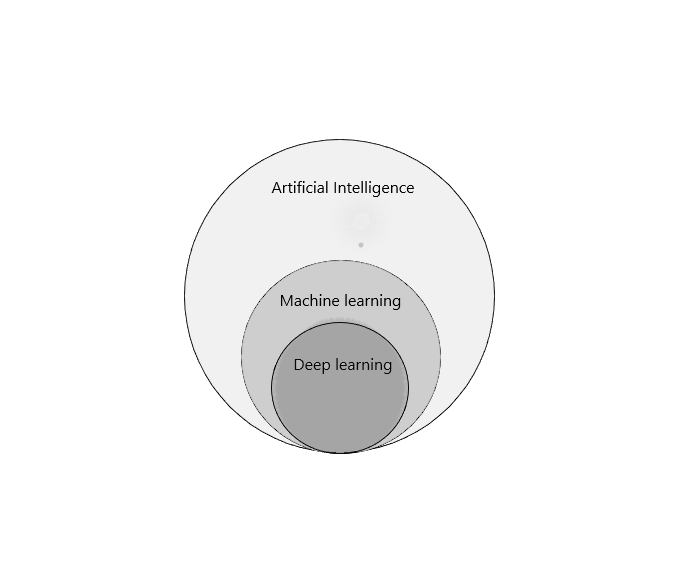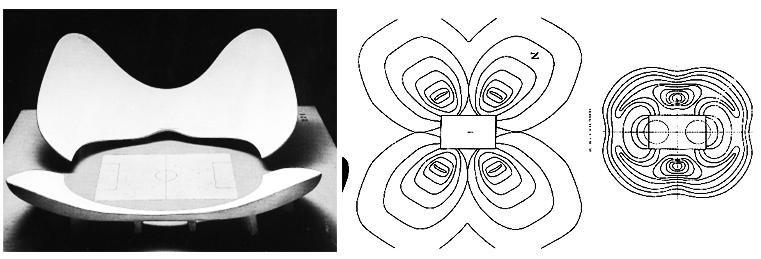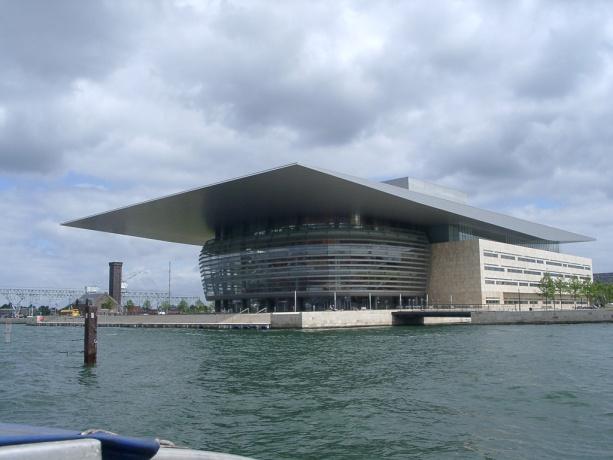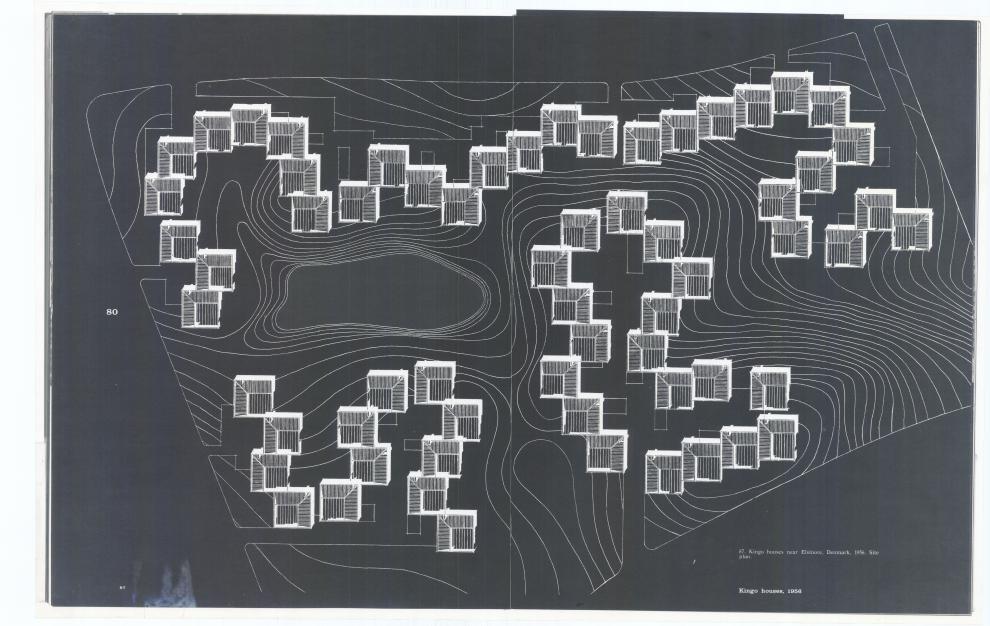
Projekt tervezési terület (en)
NewPalace
Tamas Lukovich, PhD
School of Architecture.
Ybl Miklos Faculty of Architecture and Civil Engineering
Óbuda University, Budapest, Hungary
Abstract
The widespread application of artificial intelligence is not the realm of utopias or science fiction any more. It is gradually entering practically all walks of life from science and technology to fine arts. It is most likely that architecture will neither escape this penetration in the near future. Moreover, besides some disturbing consequences, it will also reveal fundamentally new opportunities for the discipline/profession. It is up to us to decide what attitude we adopt towards it, but it is clear that this development should have profound consequences in the education of future architects, too. The paper focuses on the creative core (i.e. design) of architecture. The aims are to assess the changes and to raise awareness to these possible changes.
Keywords
artificial intelligence, architectural & urban design, evolution of algorithms, creative problem-solving, data science, university courses
We make our buildings and our buildings make us.’
(Winston Churchill)
1 Introduction and genesis
We architects still do not know much about artificial intelligence, but there are more and more aspects that are already for (almost) sure. In this paper I am trying to concentrate on them and to speculate the least posssible. For those who want to become winners of the ongoing paradigm change, there is not much time left to hesitate. The literature on AI is expansive, therefore it is surprising how little attention generally we architects, both the profession and the academia, pay to this particular subject. (The subject is truly interdisciplinary, reflected by the references, too.)
In the meantime, there are a few university design schools, such as Harvard, Stanford, Michigan and Washington Universities in the US or University College London, Hartford, ETH Zürich, University of Applied Arts in Vienna and Gdansk Technical Uni in Europe for example, actively researching the field and its implications. And there are also some countries with visionary leadership, such as China, or the United Arab Emirates for example, where separate dedicated ministries were set up, years ago, to prepare for and manage the challenge. In addition, there is also some research on AI and its impact on architecture funded by the US Department of Defense. The primary aims of the paper are to explore the current state-of-the art and to present a perspective for architectural design and its future course curricula. The research is based on information and data collected from multiple sources.
Artificial intelligence (AI) is not a mere sudden disruption but the culminating point of some 70 years of innovations and inventions. The concept of AI was coined by John McCarthy in 1956. His model for machine logic was the human brain. (Chaillou, 2019) However, the idea of autonomous software agents that, besides performing useful tasks, can also learn from experience to some extent, goes back to some research in the 1960s by the AI pioneer Oliver Selfridge. (Mitchell, 1996) (The ’Father of machine-perception’ wrote important early papers on neural networks & pattern recognition and machine learning [’demons’]). For decades however, the development of AI was evolving relatively slowly. The year of the breakthrough was 2016, when the AlphaGo program won over the world’s best (Korean) go-player. (Go is a far more complex board-game than chess, popular in the Far-East.) (Mérő, 2019) The reason: the processing power and the memory of computers have increased astronomically (so has the amount of information – big data – at a phenomenal rate) and, as a consequence, they have become extremely efficient not only in computing, but more importantly, thanks to the huge abundance of data, also in deep learning.
To define AI is not a simple task. Perhaps it is the best to put together a number of valid ones to throw light on its complex nature:
- AI is much more a holistic concept of mimicking cognitive functions than a method, to begin with.
- It is the science of training machines to perform human tasks. (PWC, 2019)
- It is fundamentally a statistical approach, the application of (as much as possible) data. (O’Donnell, 2021)
- It is achieving complex goals with a computer system in complex environments by utilizing tons of data. (Cudzik and Radziszewskí, 2018; Donovan, nd) (Often data is the main limitation for AI. The more data, the better result we get.)
- It is also about the evolution of best practices, based on algorithms capable of learning from their own operation.
They show an amazing variation - there are different ones for almost every field, since most AIs are experts in a specific task, but completely useless for all others. In general, the best results are achieved with the parallel operation of a loose bunch of algorithms, but there are cases when rather a network of well-trained artificial neurons wins. They are so complicated by now that even their creators often do not know what they exactly do and why. (Mérő, 2019)
Using a machine to mimic/simulate human traits has come a long way since the beginning of the machine age. (Hoar, Atkin, King, 2017) Nowadays, the Fourth Industrial Revolution is characterized by the fusion of technologies and unprecedented velocity, scope, continuous innovation and systems impact. Take only the internet of things (IoT) as an example. (Schwab, 2016) In general, ’intelligence’ is a collective term for cognitive performance, while ’artificial’ refers to the attempt to imitate a natural concept. In the meantime, it does not make sense to speak about machine intelligence in the philosophical sense (never the less it is so widespread that I also use it) for a number of reasons:
- Intelligence is an ability to solve problems, to reason and to learn (from experience, inclusive). It integrates deep cognitive functions and processes such as perception, attention, memory, language and planning. Adaptivity, self-learning and intuition are also essential components. And the essence of intelligence is about how one can manage (i.e. place and orient) himself/herself in a given cultural environment. So, e.g. an IQ test makes any sense only in a given (cultural) context.
- AI lacks free will or self-awareness. (Marsh, 2020)
- We cannot provide anyone with mind (brain); these algorithms can ’only’ learn to tackle certain tasks, but with those they manage that much better than we do with students. (Mérő, 2019; Hoar, Atkin, King 2017)
- At this point, there are such terms rather used as ANI (Artificial Narrow Intelligence), or Weak AI meaning that they are not (yet) capable of making intuitive decisions. (But we should not forget that AI technology and computer hardware are developing at an exponential rate.) (Beqiri, 2016)
There are also some (relatively) new buzz terms: big data, data mining, data sharing, datafication and dataism, the latter coined by the Israeli historian Y. Harari. It covers a relatively new theory/concept about information flows. (Harari, 2017) Accordingly, our universe consists of data flows (literary everything from stock exchange rates through Mozart’s chamber music to viruses). Man’s job has been to convert data to structured information, with the help of that information to build up knowledge and then to distill knowledge to wisdom. But due to the myriad of data (i.e. big data), human brain cannot manage the first step, yet. And thus, statistical computing capabilities has evoked the ’marriage’ of Data Science and AI. (Chaillou, 2019)
Before going any further, it is also useful to clarify some more operatinal definitions. Machine learning (ML) trains a machine how to learn from data. ML models are trained by sample data sets and the idea behind them is to look for patterns in the data and to draw conclusions from these. However, deep learning (DL) is a subset of both AI and ML. (Fig. 1) It is a method of machine learning and based on a huge neural network with multiple layers of interconnected units (like neurons in the human brain). When processing information, multiple runs are required to find connections in the data. (Deep learning methods employed by experts in the coded structure of neural networks include hallucinations, dreaming, transfer and vision.) (del Campo et al, 2020) As a result, DL methods manage to learn complex patterns in large amounts of data. (This takes advantage of today’s computing power and improves training techniques. We can already enjoy DL outputs in our daily life: e.g. image and speech recognitions.) (PWC, 2019) So, ML and DL are methods to learn from data and they are subsets of AI and each other.
So, paraphrasing Churchill’s aphorism mentioned earlier (originally applied to buildings): we make our AIs and our AIs make us (?).
Fig. 1 AI, ML and DL are not synonymous or interchangable: AI is a holistic concept of mimicking cognitive functions, while ML and DL are methods to learn from data (PWC, 2019)
2 What we do know
It is already looming up that the rapid development of AI and the consequent fourth industrial revolution are not only going to abolish many ’traditional’ jobs soon, (expert estimates, depending on actual facets, range between 50-80-90%!) turning our old world order upside down, but are also going to enrich our life and our way of thinking. Potentially they might be great tools to assist us in the infinity of sciences and in the infinity of our not-knowing. (In the spirit of the latter, even if we solve a problem in science it still remains infinite.) (Mérő, 2019; Schwartz, 2008; Deutsch, 2012) The scale of this job loss is alarming. Although the analysis of all social implications is not the focus of this paper, in summary it is worth noting that politicians and social scientists should instantly start thinking about how to reorganize a society where the existence of the majority, not at their fault, economically is not going to be justified! Some scientists and experts, however, have issued early warnings well in time. (Sai-Halasz, 1993)
AI represents a giant step change that will impact just about everyone and everything to a greater or lesser extent. The question is the extent and timescale involved. Gone are the limitations imposed by traditional data-processing applications or the difficulty of getting access to them; in their place are predictive analytics and other advanced methods for extracting meaning and value from data. (Hoar, Atkin, King, 2017) In regards to harnessing this power, there already are many commercially available (in fact, since 2014) voice-controlled ’virtual assistants’ for households - such as Apple Siri, Microsoft Cortana, Samsung Bixby, Google Assistant or Amazon Alexa. In order to serve us the best, they continuously monitor our behaviour: i.e. collect, store and analyze data on us. Amazon Alexa can already control some 85 thousand different smart appliances and gadgets and perform more than 100 thousand functions! Presently, their development is focusing on their proactivity. (To give a concrete example: if people use more and more Amazon Alexa to buy household goods [‘Alexa, buy 2 boxes of diapers and a 6-pack of water!’], imagine the impact this will have on the advertising industry, logistics or retail. Our profession will face similar changes, albeit perhaps harder to comprehend at first.)
There are less and less fields where man can add value to the solutions of AI. AI has already been able to compose music, write poems (e.g. haiku) and design complex works of fine art that the audience was unable to differentiate from human creations. (Harari, 2017) (There are some experts, however, who argue that humans will re-purpose their skills to continue adding value to the solutions of AI, potentially in new skill sets and areas that are not available today.) Where AI is unbeatable, we better accept what it provides. However, there are some fields (e.g. urban planning/design and architectural design to some extent) where there are no predetermined right answers for problems but rather an infinite (or a great number of) possible solutions, and the actual answers and/or decisions are largely dependent on our value systems and/or on social-political compromises. While there are some good practices already (e.g. in environmental traffic mangement or crime prevention in NYC), what is really challenging: how to cooperate with such a ’super-intelligence’, especially in our profession, the operation of which is not comprehended even by its creators.
Although AI is basically a disruptive technology, (i.e. it will abolish jobs and radically change best practices, consequently leading to paradigm change) it is not going to be that evenly and entirely in every profession: good examples are healthcare (due to the lack of doctors and nurses on one hand, and robots performing an increasing amount of surgeries, on the other), air traffic management (increasing safety and efficiency) or cyber security. (Eurocontrol, 2019) Thus it is also transformative, and many benefits will be bestowed on those who can use it for good. No profession will be exempt from the changes: lawyers, doctors, engineers, teachers and accountants all will face the waves of ’disruption’. The technology is not bad or good (take nuclear energy or the internet: it can be leveraged for both good and destructive purposes).
For those engaged in creating and sustaining the built environment, however, there are obvious threats from the technology that can increasingly outperform the physical and cognitive skills of professionals and workers on all levels from the design through the construction of a building to the real estate and facility management industry (i.e. selling/letting, managing and maintaining properties). (Hoar, Atkin, King, 2017) Therefore in architecture (and in civil engineering as well), it will also prove to be both pretty disruptive and transformative at the same time. In urban planning and architecture we seldom engage in discussions about the potential impacts AI will have on the built environment. We need to understand clearly the two distinctive forces at play: disruption and transformation – and we need to find answers to manage both.
3 The realm of architecture
Buildings primarily consists of ideas and not merely of brick and mortar. Furthermore, architecture is not an independent, socially isolated and fully autonomous practice (as some architects would like to see it), but is influenced by a great number of facets: economic development, technological innovations, ideology, politics, power, religion, ego and/or even necrophobia. It is not purely a matter of building, technology and drawing, but of idea exchange, concepts, meaning and communication. Through its memes, it is also a form of public (community) art, technology compendium and applied social/behavioural science. (With our designs we influence/control users’ behaviour, hence the political dimension of designing [urban] spaces.) Besides the physiological or physical ones, human needs for architectural design also include cognitive, spiritual and symbolic aspirations right from the beginning. Our designs, however, should be driven by knowledge (facts) and not merely by assumptions (beleifs). The general weakness of most design philosophies is the lack of understanding the intricate, fine and interconnected aspects of our life (i.e. what affordances the users are provided by the various patterns of the built environment). (Lang, 1987)
At the same time, architects/designers informally and formally accumulate an incredible amount of knowledge/experience (as they gather information, analyze, evaluate, test, make experiments and corrections in the course of their work) about the world, including enormous repositories of imagery generated by the architecture profession through the ages. But they possess too few organizing models and most of this knowledge is not easily and systematically accessible for application and testing. (Lang, 1987) In other words, there is a wealth of design precedents (ideas, concepts, experiments, successes and failures) accumulated in various periods, cultures and climates (including prehistoric, vernacular and no-name everyday environments, too), respectively. (Rapoport, 1990)
It seems like AI could be the very candidate that might tap into this incredibly diverse ’knowledge bank’ far more effectively that any human being before, so architects can augment human intelligence in their creative process. However, the real challenge is that architecture is an open-ended ’game’ (while chess has a finite end point and clear set of rules), where the decision space of design is so large that, given a set of requirements, the number of possible designs is only limited by the architect’s time, training and willingness to experiment. (Marsh, 2020) In addition, ethical and other value driven considerations (such as solidarity, positive discrimination, esteem, respect, greed etc.) are apparently not manageable by AI.
According to Chaillou (2019), the successive evolution of technical solutions in architectural design includes four distinctive phases on the value chain: 1) modularity, 2) computational design, 3) parametricism and4) artificial intelligence. (These steps are certainly not independent of one another and may co-exist or overlap in some periods on the timeline.)
1) Modularity is a product of the Modern Movement and was first theorized by Walter Gropius in 1920 for the Bauhaus. Later, Le Corbusier, Buckmister Fuller, Jørn Utzon and Moshe Safdie had, among others, made their substantial contributions, respectively. Even urban planning got influenced (e.g. Archigram’s Plug-in City concept), and in its most extreme form architectural and urban design became subservient to efficient modular Lego-like construction technology (e. g. modular mass housing). Gradually, modular systems became so complex (see the early case of the Sydney Opera House, for example) that it generated the need for applied computation. (One of the first appplications of CAD computation occured for the structural design of the Sydney Opera House in the early 60s. The software was written by an engineer of Ove Arup and ran at nights on a giant GE computer.) (Lukovich, 2018)
2) The automation of architects’ work has started with the computational functions that were introduced to CAD tools. In fact, it started in engineering in the late 1950s, when Patrick Hanratty released the first prototype of CAD software. (Chaillou, 2019) Soon after, the possibility offered was triggering interest in the field of architecture. Christopher Alexander (the Austrian born mathematician-architect genius, working in the US) laid down the conceptual principles of computational design of shapes in his seminal book ’Notes on the Synthesis of Form’. (Alexander, 1964) In the 60s, the book was on the compulsory reading list of researchers in computer science. These key principles are still today the bedrock of software programming. His object-oriented programming theory and its application to design represented radical advances and created a new field of research for an entire generation of computer scientists and architects: i.e. computational design. (Chaillou, 2019) (As a consequence, the specialized software giant Graphisoft with ArchiCAD has fledged and developed from Budapest, for example.)
Although contemporary architects often use advanced computational systems to design complex forms relatively freely, most of their currently available digital tools are limited to pre-determined commands. Therefore, more and more attention is paid to newer design techniques applying the heuristic (rule-based decision making) approach. (Cudzik and Radziszewski, 2018)
Fig. 2 The ’surprising’ shape: Moretti’s pioneering theoretical stadium design
3) Both repetitive tasks and complex shapes can be handled in the world of parameters. The advent of parametricism goes back to the early 1960s, when Luigi Moretti’s theoretical stadium project (Fig. 2) with 19 driving parameters resulted a surprising shape: aesthetically organic while rational as a conception process. (Chaillou, 2019) With the help of computation, architects are able to vary the input parameters communicated to the software, and to generate diverse forms and configurations, yielding multiple design scenarios to be evaluated. It has been a ’secret weapon’ for many architects. (As a consequence, spectacular, literary sculptural quality of complex shapes have been achieved in some contemporary iconic buildings, such as Gehry’s Guggenheim Museum in Bilbao, or the FOA Group’s International Terminal in the Port of Yokohama. (Fig. 3, 4) The curving surfaces of the former one were designed with the help of an aviation technology software but guided by architects’ sketches, the result of the latter one, however, processed totally in a ’black box’ situation, caught even the architects at surprise.)
Fig. 3 The curving surface of the iconic Guggenheim Museum in Bilbao (Frank O. Gehry)
Fig. 4 The sculptural Yokohama Terminal in Japan (FOA Group)
Parametricism has also been developed in urban design research projects aiming sustainable urban morphology (including ventillation/wind, radiation/solar access, street network generation and block subdivision). (Taleb and Musleh, 2014; Schneider, Koltsova and Schmitt, 2011) However, a more substantial revolution has been going on since the early 2000s onwards with Building Information Modeling (BIM), the underlying idea of which is that every element of a building is the function of its parameters. It is about the explicit utilization of parameters as a driving force of the design. Parametric design, however, reached a plateau over the past decade due to a number of reasons, the most substantial two of which are that 1) often conflict evolves between the exterior and the interior of the designed space; and 2) architecture as a result of a fixed number of parameters neglects the complexity of space creation (i.e. its environmental, social, cultural and historical context). (Chaillou, 2019; Botzheim, 2015) Summing up: over three decades, parametric designing has been developing from simple parametric curves (of non-Euclidean geometry) through parametric modelling to algorithmic modelling.
4) In fact, a clear early vision to enter into a dialog with the computer was developed by MIT’s Architecture Machine Group, led by the visionary Nicholas Negroponte in the late 1960s-70s. (Negroponte, 1970; Picon, 2020) The application of AI is a fundamentally new statistical (stochastic-based decision making) approach to architecture that can overcome the above limitations of parametric design. Its premise is the partial independence of the machine to develop its own understanding of the problem and to ’digest’ the complexity of the examples provided. Instead of a deterministic model with a set number of parameters and rules, in the ’learning phase’ AI creates some intermediary parameters from the vast amount of data and/or the instructions by the user. Then in the ’intuition’ (creative) phase, it will generate solutions for the actual complex design problem. (Chaillou, 2019)
According to Csikszentmihalyi (1998), internalization of the basics, the rules and the preferences of the field, flexibility and adaptability are essential requirements to creativity. Most AI softwares display these characteristics, already. While, according to Cudzik and Radziszewski (2018) there are many different forms of AI approach, we can distinguish two main models: the subsymbolic systems (the selected parameters are analyzed in a hierarchical way) and the symbolic systems (autonomous processes operating in a non-hierarchical way, the solutions are less expected). Perhaps a useful analogy to grasp their fundamental difference is offered by Alexander’s seminal early paper ’A city is not a tree’. (Alexander, 1965)
The main generic AI algorithms applied in architecture nowdays include:
- evolutionary/genetic algorithms (inspired by the processes of biological evolution; they produce solutions to problems that could not be clearly understood; their use is driven by the trend of finding new free forms);
- swarm intelligence (behaviour-based solutions to advanced geometrical issues; it is modelled on the collective behaviour characteristics of animals, like bird-flocks, with capabilities beyond human control systems); and
- neural networks (machine learning inspired by biological neural networks; they are less predictable, rather intuitive, resembling human-like decision-making processes; after their supervised or un-supervised training on examples provided, they may function as co-designers – e.g. GANs i.e. Generative Adversarial Neural Networks). (Cudzik and Radziszewskí, 2018; Donovan, nd; del Campo et al, 2020)
In fact, it is BIM (Building Information Modeling) that is becoming an enabler for AI in the built environment, because it creates a working environment and IT infrastructure that benefit from applications where AI can excel. BIM is an enabler of innovation as it lays the foundation for a digital world in which AI can enhance current capabilities in design (and in fact in construction, real estate and facility management, too). AI will also help to redefine and extend the role of BIM; for example, identifying missing components and/or conditions that are undesirable against previously defined criteria. (Hoar, Atkin, King, 2017)
AI for architecture and design is still in the early phase of development. (Marsh, 2020) However, it is already present and is often used by tech-friendly architects to solve problems in their projects which would take days, if not weeks, otherwise. A good example is the space syntax software (depthmapX) by Bartlett School at UCL to analyze urban spatial networks on various levels without the need of going on site. Or Graphisoft’s EcoDesigner Star which makes possible for architects to simulate the environment. But there are a few programs that can almost instantly provide the best layout of spaces, too, pending what data and requirements we input. (Beqiri, 2016)
One particular experiment (at Harvard GSD) that applied AI to floor plan design (analysis and generation) uses six key metrics (aspects), including footprint, orientation and circulation among others, in a ”grey boxing” approach. (Chaillou, 2019b) In contrary to a ”black box” situation, ”grey boxing” permits the user to intervene during the process. Other examples are the energy modeling of a complex building or the simulation of crowd behaviour in various spaces. (Marsh, 2020) But in order to fully take advantage of their creative potential, we must respect the fundamental ’otherness’ of computers: the elements a machine bases itself may profoundly differ from ours (e.g. where we see walls, floors and roofs, a machine may choose a different way to organize its reading of a building). (Picon, 2020)
Realizing that beyond being a digital drawing board, computers can also be an intelligent means for design, in 2001 as a non-profit international organization the SmartGeometry Group was set up by some leading architectural and engineering practices (e.g. Foster + Partners, KPF, Arup) and some universities (e.g. MIT, AA School, Delft Technical University) to provide connection among practice, university education and research (since 2005, they run annual conferences and workshops). According to them, for the future generation of architects programming and mathematics will replace pencil and paper. (Botzheim, 2015) For the time being, AI will not entirely replace architects, however, at each step of development fewer architects are needed to work on more complex projects and the size of architectural offices might be atomized. (architecturaldigest, nd) (Besides, PACT 2016 has been a similar endeavour.)
4 AI in Urban Design and Planning
We must make a clear distinction between architecture and urban design & planning as the client (and the users) of the former is well defined, however the decision makers, developers and users of the latter are many actors both from the private and public sectors (i.e. the so-called ’pluralistic, non-feepaying client’). City planning and urban design are very complex tasks that can take years. They involve different interest groups, politics and policies, coordination, changes over time, contradictory needs and compromises.
As prelude to AI technology, parametric urban design has already been developed with such tools as Grasshopper, ANSYS CFX, or CityEngine. These projects typically focus on the optimalisation of sustainabilty aspects and urban morphology; the outcome is diverse forms and configurations, street network generation and block subdivision. By changing the selected parameters, multiple scenarios could be generated and evaluated against a base scenario. (Taleb and Musleh, 2014; Schneider, Koltsova and Schmittt, 2011) With AI, certain environments can also be made more responsive: i.e. improving experince in hospitality spaces like theme parks, shopping centres or cruise ships (’floating towns’). And it is possible to extend similar approaches to any environment at urban scale. (Marsh, 2020)
Access to citizens’ information from all kinds of devices via a ’multicloud data platform’ could provide great opportunities for planning professionals. Knowing almost everything about us and our behaviour, AI software can calculate population growth, analyze infrastructure and street-flows, categorize roads, uncover urban relationships, prioritize projects etc. and draft rough plans accordingly. This draft can then be improved by professionals involved. (Beqiri, 2016; Donovan, nd)
It could also pull out city- and/or zone-specific data and building codes (legal development control measures) to generate valid design variations. Or on the other side at planning and building authorities: it can swiftly process development/building applications againts the valid local and national building codes and development control regulations.
There is an important inherent aspect of planning however: forecasting the future. Although AI can technically assist even in that (with analyzing ’data clouds’, extrapolating curves along the timeline and calculating scenarios), on its own it is of not much use in it as human vision is an essential part of dealing with the future.
5 Implications for architectural design practice
We still do not know everything about the nature of architectural design either. Designing involves consciousness, organization, control and creating order and connections at the same time. (Lauer, 1984) It is often a creative problem solving activity, but not always necessarily as there are (even succesful) practices rather based on customs/traditions or reduced to intuition. The creative activity is a non-linear process that includes research, analysis, evaluation, synthesis and decisions as well. Some of these components happen in the subconscious mind (a kind of ’black box’) where the input is the myriad of information and the output is the alternative figural solutions (drawings). The main means of describing possible choices are the alternatives developed for solving design problems. There are a few methods to assist this development, such as experiments, case studies and inventory lists of both past projects and functional design elements. (A good example for such design compendiums is the bulky Neufert handbook or the Architect’s Handbook much earlier.) (Neufert, 1998; E. & O. E., 1936)
Architectural problems, however, are peculiar as there are no predetermined right ’answers’. The answers are functional and visual solutions, for the interpretation and the application of which there may be infinite number of variations. Architectural problems can be tackled with a number of design strategies/methods: 1) the ’analogue’ ones - some designers tend to work from the overall level towards the details (from outside-in; e.g. Mies van der Rohe); 2) the ’digital’ ones - some move from the details towards the whole (from inside-out; e.g. Le Corbusier); while 3) others start to work with a particular component of the problem they are the most content with. But starting a design any way requires hours of formal and informal research both of understanding the intent of the project and of similar projects of the past. (Donovan, nd)
However, architectural and urban designing is seldom an individual activity. A number of team-members and other experts contribute as resources, potentially opening up new dimensions of thinking. Often outsiders (individuals coming from other areas) prove to offer more value for the process than experts of similar background and experience.
Contemporary architectural practices apply a variety of design tools from traditional drawing to advanced (semi-)autonomous systems, depending on their experiences, preferences and actual projects. The latter complex tools enable higher efficiency and the creation of new complex spatial forms (solutions) which otherwise could not have been created. The first step in using these genuinely 21st century design techniques (i.e. based on AI) is to start accumulating data, as much as possible, to rely on. The industry has made some progress in making research and case studies available (e.g. through the Building Research Information Knowledgebase in the US), however, there is still a gap in professional practice-wide sharing of big data. Data sharing may occur internally (i.e. within a firm) as well as externally. On the one hand, storing and sharing of big data and feeedback become easier through cloud technology, but when firms conduct research and development, they are often hesitant to share knowledge externally because of the competition, on the other. (O’Donnell, 2021) In addition, there are complex problems in connection with data gathering, storage, delivery and sharing unfortunately unresolved sofar: regulations, protection of intellectual property, security and ethics to name a few.
Regardless what tools the designer selects, balancing the weights of various factors and communicating intents to the machine will remain his/her responsibility (Chaillou, 2019). So the important design decisions are likely to remain ours, or at least verified by us (O’Donnell, 2021). In fact, human decision-making always involves some emotions, too, (we could not make decisions without them) and our ability to make irrational decisions, to empathize with others and/or to decide to take up contrary positions makes us and the arts we create human and strong. (Hoar, Atkin, King, 2017; Mérő, 2010; Botzheim, 2015)
AI gives the architect the tool to set constraints, plug data and create countless iterations of the building swiftly. Soon, clients can tell an application what kind of building they want, determine its place/site (automatically with all the legal and development control implications), their cost limits and main dimensions and their other preferences and subsequently they might get some alternatives within minutes if not seconds. They will be able to rearrange the plans, check how their furniture could fit into, see it in 3D virtual reality and approve the preferred version.
So, architecture is due to undergo a profound (r)evolution, caused by AI as a more and more affordable and powerfool medium that is being transfomed from an anlytical tool to a generative agent. The real danger for the architecture profession is to believe that clients will be reluctant to accept work performed by a machine, always preferring the human touch. As AI driven applications are going to be extrelemly cost effective, the consequent professional fees will be truly convincing. (Hoar, Atkin, King, 2017) (Similar thing happened many years ago when standard design schemes were offered to prospective clients for cottage building, cutting back costs, time and jobs in architectural design.) But beyond cost and speed (virtually real-time), AI is also going to offer flexibility and the opportunity to introduce and test new parameters (previously unthought of), certainly including precision.
6 Summary and conclusions
This is still the ”advent” of AI in architecture, but it is about to reshape the architectural profession. In the meantime, the conversation on the nature of ’human ingenuity’ operating within a ’posthuman design ecology’ is going on. (del Campo et al, 2020) There is no question that architectural practice will be fundamentally affected in the way that the expertise of specialists could be available to the broader public. The level of impact, however, is not going to be even in all phases of designing. For example, our ability to learn from previous projects and performance measurement in the delivery phase (e.g. benchmarking) are going to be improved by a combination of AI and big data. As far as the often claimed ’objectivity’ is concerned, AI removes the subjectivity and can present whatever can be deduced from the facts. It is then for the human decision maker to determine what action is needed. (Hoar, Atkin, King, 2017)
For the application of artificial intelligence, three components are required in general: computing power (not necesserily robots, only for certain tasks), a system of ’cognitive’ software and enough data/info on best practices (i.e. patterns, models or compendium of examples). In principle, all three are available already in the field of architectural and urban design, too. Therefore AI has the potential to provide new possibilities to explore and may also change how we think about creating architecture. As a first step in the near future, AI is likely going to function as a designer assistant (or co-designer) helping us the find possible solutions to problems and to suggest alternatives on their own. But much more will come (e.g. government or authority approval may well become a process between two AIs: one AI on authority side talking to the other one on the consulting architect’s side).
Although AI in architecture and urban design/planning promises a lot, it is difficult to predict what it will be like exactly in the future. But it is only a matter of time until it becomes the only way. The (sub)fields or functions where AI is surely going to outperform architectural designers are:
- in ’luxury architecture’ or ’etalon projects’ (i.e. landmark buildings, e.g. the Copenhagen or the Tenerife Opera houses (Fig. 5) - generating a variety of new design/form solutions, comparing the efficiency of the alternatives and working out the details),
- in routine or repetitive projects (e.g. floor layouts of housing or hotel jobs) – virtually all tasks, especially crunching data and doing tedious and repetitive tasks. (Fig. 6)
Fig. 5 Two ’etalon buildings’: the Copenhagen (Henning Larsen) and the Tenerife (Santiago Calatrava) Opera houses
Fig. 6 ’Repetitive’ housing project (Utzon’s Kingo Houses, Denmark)
However, it will not entirely replace humans as designers not because of the complexity of these tasks, but due to our ever present aspiration and sensitivity to create and control our environments. (Most architects have a particular affinity to influence other people’s behaviour and maintain an intimate relationship with our instincts to control the total environment.) (Sudjic, 2006) So the responsibility of professional decision making (choosing from the computed solutions) will remain our role, while applied AI might verify our choices from the almost infinite solutions. (After all, the essence of real decision making is the selction of right questions.) Consequently, the question of ’who is the author?’ remains a difficult one to answer.
Thus with AI massively empowering architects, the role of the designer might be elevated from the heavy lifting ground work to more of a consultant/advisor/inspiration provider role. Therefore, successful architects of the future should start focusing on new skills (i.e. rather than learning the technicalities of the work that the machine can do in the future) learning how to provide the data and the commands to the machine, and invest more time on improving the skills they would need to advise their clients (such as concept-generation, selling their ideas to the client, communication skills, etc.).
As to the dramatic shrinking of present jobs, the discipline will undergo a massive transformation. There are no alternatives than architectural practices take a close look at what and how they are doing now, what they want to do in the near future and then assess their position and chance of survival in the course of developments in AI technologies. The big question is access to data. Who and how will control that in and for the professions involved? Those who do, will win. However, as the application of AI requires substantial investment in hardware and software, large firms, midsize practices and software companies are leading the way and therefore are developing a competitive edge. (O’Donnell, 2021)
Finally as to university courses, AI might assist only the competent architects (later it could, however, also turn to the opposite). Therefore, they will have a significant advantage in the market. (Presently, there is still mass-training of architects worldwide.) But then, certainly much less (highly trained) architects will be needed. As a consequence, in the curricula of architecture courses the topic should, without much delay, get gradually (step by step) onto their agenda (in Hungary, too), in the form of
- conceptual and philosophical discussions,
- technical skills and knowledge to enable students to train and feed machines,
- interdisciplinary projects (in coordination with type of engineers who write codes) and
- student and staff research
at bachelor, master and PhD levels as well, to avoid soon becoming anachronistically obsolete.
Acknowledgement
I wish to express my gratitude to Dr. John Roseth, Nay Abi Ramia, Dr. Kristof Lukovich and Zsofi Lukovich for their valuable comments and contributions. I also thank Prof. Anthony Gall, Dean of the Faculty and Ass. Prof. Viktoria Sugar, Head of the Institute, respectively, for the opportunity and my wife, Kati for the support.
References
- AD Staff (nd) Artificial Intelligence might soon take over architecture and design, www.architecturaldigest.in/ content.
- Alexander, C. (1964) Notes on the Synthesis of Form, Harvard University Press, Cambridge, MA.
- Alexander, C. (1965) ”A city is not a tree”, Architectural Forum, Vol. 122, No. 1, pp. 58-62.
- Beqiri, R. (2016) A.I. Architecture Intelligence, Architecture and Urban Planning in the age of Artificial Intelligence, www.futurearchitectureplatform.org/news/28.
- Botzheim B. (2015) ”Az építészet határterületei, Parametrikus építészet” (Borderlines of Architecture, Parametric Architecture), Magyar Építőművészet (Hungarian Architecture), 4. (in Hungarian)
- Chaillou, S. (2019) The Advent of Architectural AI, thesis, Graduate School of Design, Harvard University, Cambridge, MA.
- Chaillou, S. (2019b) AI & Architecture, An Experimental Perspective, www. medium.com/built-horizons.
- Cudzik, J., Radziszewski, K. (2018) ”Artificial Intelligence Aided Architectural Design”, AI for Design and the Built Environment, Vol. 1, October, pp. 77-84.
- Csikszentmihalyi, M. (1998) Creativity. Flow and Psychology of Discovery and Invention, Oxford University Press, Oxford.






